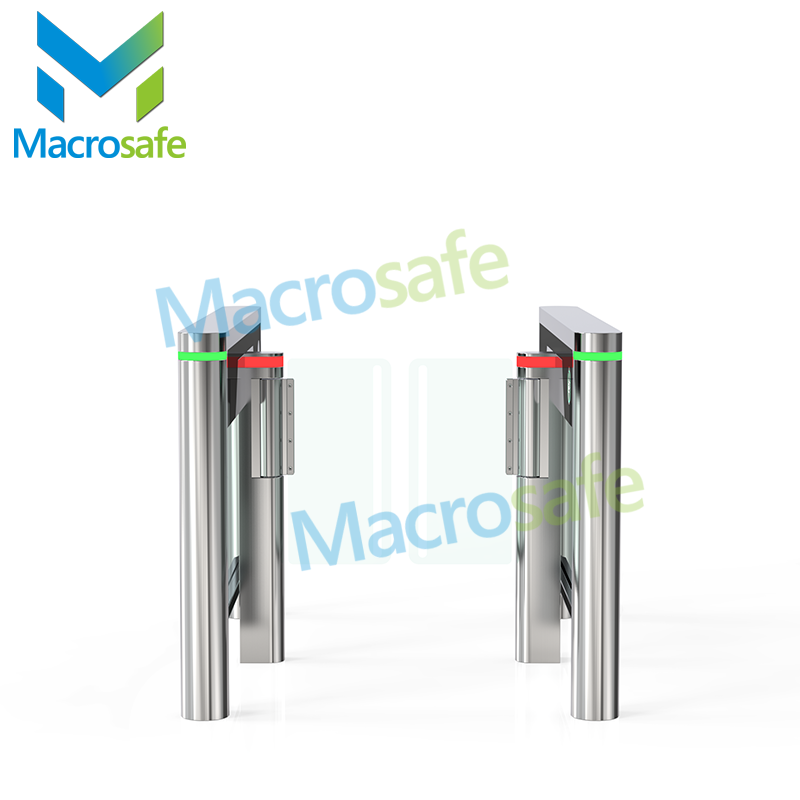Access control is a crucial aspect of security for both public and private spaces. Traditionally, access control systems have relied on methods such as keys, keycards, and security guards. However, in recent years, turnstile gates have emerged as an advanced solution for efficient and effective access control. This article provides a comparative analysis of turnstile gates and traditional access control methods, highlighting their features, benefits, and limitations.
- Traditional Access Control Methods
1.1 Keys and Locks:
Keys and locks have long been the most commonly used access control method. They provide a basic level of security but are prone to key duplication and loss. Additionally, using physical keys can be less convenient as they require manual handling and pose challenges in managing access for a large number of users.
1.2 Keycards and Proximity Cards:
Keycards and proximity cards have gained popularity due to their convenience and ability to grant or revoke access electronically. These systems use magnetic stripes or RFID technology to validate a user’s identity. However, they can still be susceptible to card cloning and unauthorized use.
1.3 Security Guards:
Security guards provide a human presence and can verify individual identities visually. This method allows for flexibility in managing access control but can be costly and may experience human error. Security guards also cannot handle large crowds efficiently.
- Turnstile Gates
2.1 Types of Turnstile Gates:
There are various types of turnstile gates available, including waist-high, full-height, and optical turnstiles. Waist-high turnstiles are commonly used in places with moderate security requirements, while full-height turnstiles provide superior security by preventing unauthorized climbing or jumping. Optical turnstiles offer a sleek and aesthetic design, combining security with a seamless user experience.
2.2 Features and Benefits:
Turnstile gate offer several features and benefits superior to traditional access control methods. They enhance security by only allowing one person to pass at a time, deterring tailgating or piggybacking. Turnstile gates are also compatible with various authentication methods such as biometrics, access cards, and facial recognition. This ensures accuracy in identifying authorized individuals and prevents unauthorized access effectively.
2.3 Efficiency and Crowd Management:
In high-traffic areas, turnstile gates provide efficient crowd management. They can process a large number of people quickly, reducing queues and waiting times. Turnstile gates equipped with advanced sensors can detect any unauthorized access attempts or suspicious behavior, adding an extra layer of security.
2.4 Integration and Analytics:
Turnstile gate can be integrated with existing access control systems, surveillance cameras, and visitor management systems, allowing for comprehensive security management. They provide real-time data on entry and exit patterns, enabling analysis for better resource allocation and improved security protocols.
- Limitations and Considerations
3.1 Cost and Installation:
Compared to some traditional access control methods, turnstile gates can involve higher upfront costs in terms of equipment and installation. However, their long-term benefits, improved security, and efficient crowd management make them a worthwhile investment.
3.2 Accessibility:
For individuals with mobility challenges or disabilities, turnstile gates may not be the most suitable option. Alternative access control methods should be in place to accommodate these individuals without compromising security or convenience for others.
Conclusion:
Turnstile gates offer a significant improvement over traditional access control methods. Their enhanced security features, efficient crowd management capabilities, and integration possibilities make them an ideal choice for a range of applications. However, it is essential to consider factors such as cost, accessibility requirements, and system integration before adopting turnstile gates. By carefully evaluating these factors, organizations can make informed decisions to enhance their overall access control systems.


